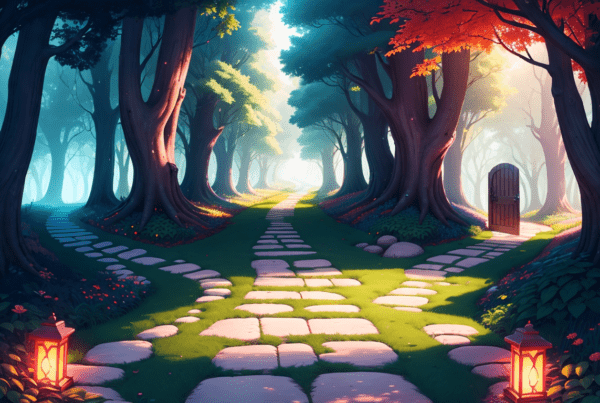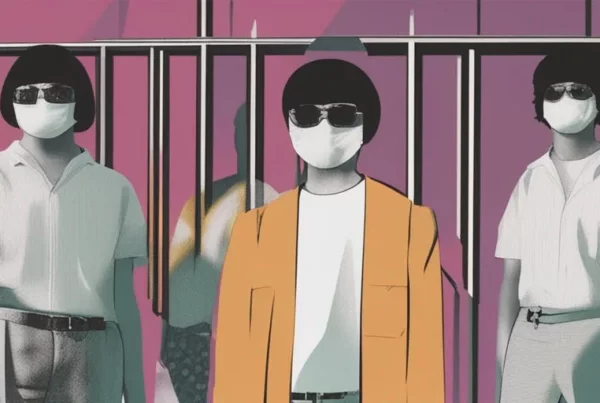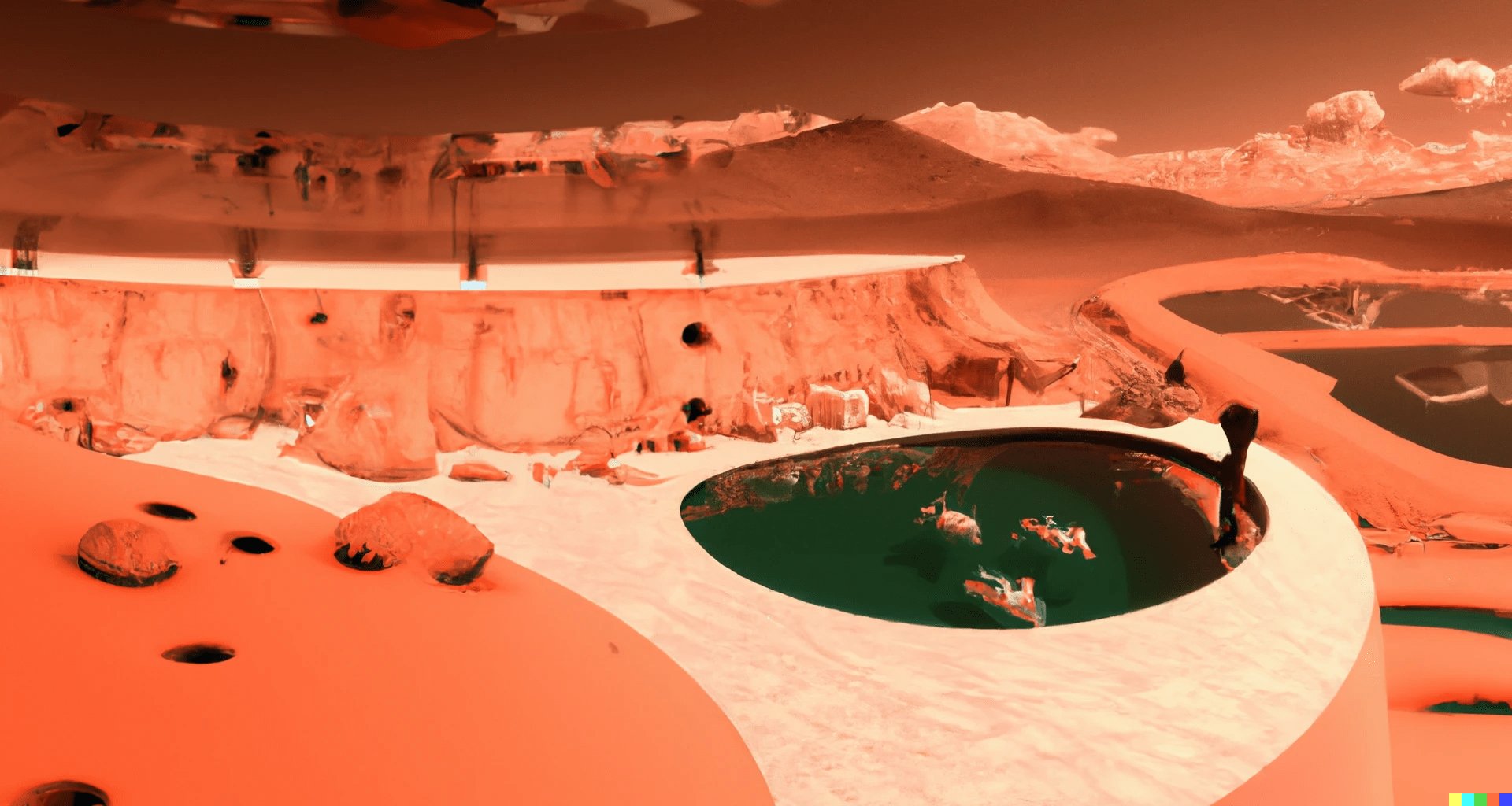
Those unfamiliar with the application of AI to the creative process may be baffled by the term “DALL·E 2” I’ve got you covered. My reaction was the same right up until just recently. According to creative social media influencers, it’s a cool piece of software to use for creating art. After using it for a while, I can say with confidence that it is one of the most impressive technological advancements ever made in the field of artificial intelligence. Don’t worry if you haven’t heard of this fantastic resource yet. This is why I’ve come: to shed light on the matter. Where did it come from? So, how exactly does it function? So, how do you utilize it as well? what this means for the world’s multitudinous creative types, to wrap things up.
What is DALL·E 2?
DALL·E 2 is a new artificial intelligence system that can use natural language descriptions to make realistic pictures and art. It is capable of producing original artwork and images that are realistically based on a text description. It is able to combine ideas, characteristics, and approaches. It has the capability of expanding images beyond the confines of the original canvas, which can lead to the creation of expansive new compositions. It is able to edit existing images in a realistic manner if a natural language caption is provided. It is able to add and remove things while simultaneously taking shadows, reflections, and textures into account. It is able to take an image as its point of departure and produce a number of variants that are modelled after the original. It is powered by a piece of software known as GPT-3, which is an artificial intelligence programme that interprets natural language and transforms it into images.
Where did it come from?
Before we talk more about the topic, let’s try to figure out where this came from. In December 2015, Elon Musk, Sam Altman, and other investors announced the formation of OpenAI and pledged over US$1 billion to the venture. It is an artificial intelligence (AI) research laboratory consisting of OpenAI LP (for-profit) and its parent company, OpenAI Inc (non-profit). The company conducts research in the field of AI with the stated goal of promoting and developing friendly AI in a way that benefits humanity as a whole.
How does it work?
Here’s a quick rundown of how DALL·E 2 turns text into pictures: A text encoder makes text embeddings using the text prompt. These text embeddings are used by a model called the prior to make the image embeddings that go with them. Lastly, an image decoder model takes the embeddings and turns them into a real image. Now, what is a text encoder? Text encoding is a process whereby texts are transferred to an electronically searchable format.
What can I do with DALL·E 2?
DALL·E 2 is not a single tool. Using a single tool, you can do one task very well. For example, a screwdriver. You can use it to fix a screw very securely. No other tool does this job better than a screwdriver. You cannot use it to hammer a nail. Using the same analogy, DALL·E 2 is more like a Swiss army knife with four different tools built into it.
- It can generate unique, realistic images and art based on a text description. It is capable of combining concepts, attributes, and styles.
- It can take an image and generate multiple variations based on the original.
- It can stretch images beyond the boundaries of the original canvas, resulting in expansive new compositions.
- It can realistically edit existing images based on a natural language caption. It can add and remove elements while accounting for shadows, reflections, and textures.
Exploring DALL·E 2
Now let’s go over these points one by one.
ONE. Generating art from the text.
I’m going to enter a text description of the image I want to create. As I’ve mentioned that is the primary function of DALL·E 2.
The prompt I’m going to use is “a sunlit outdoor lounge area with a very large pool with translucent water, next to a golf course, on the planet Mars, photograph.”
My prompt is broken up into several pieces by artificial intelligence, which thereby performs its wonder.
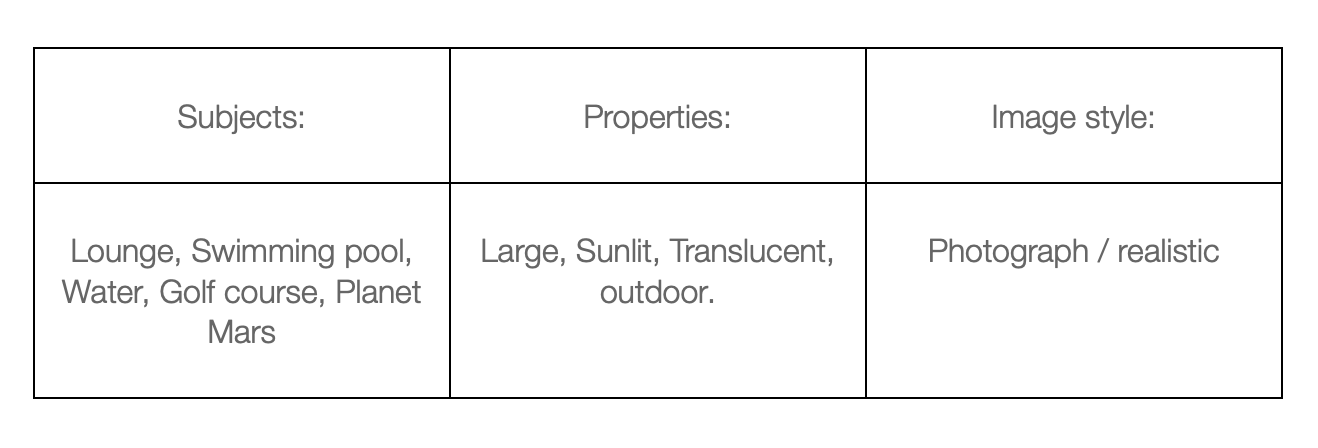
Be aware of the fact that this explanation only covers the most fundamental aspects of how this AI operates. It appears that more than 3 billion different factors are considered for each image before it is produced.

There you go. It created four unique images based on the prompt I gave the AI.
Now I really like the 3rd one from the left.

Two. Generating variations
Let’s try the 2nd point in the list using this particular image.
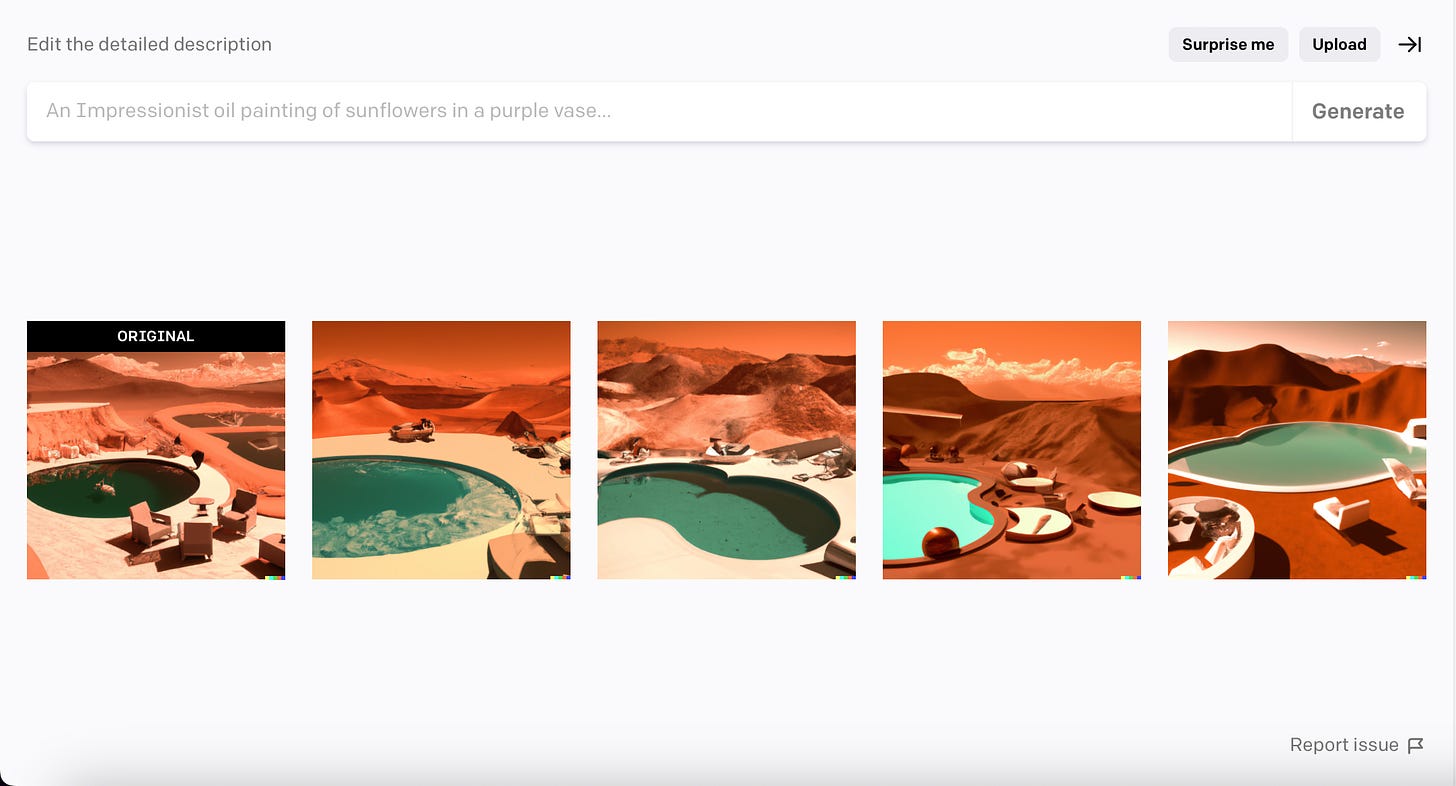
The outcomes are fantastic, but the details aren’t quite as impressive as the whole.
Three. Expanding images beyond the boundaries.
The third function involves expanding the image beyond its confines. I used the same image, but this time I extended the borders using the prompt “Peaceful mars civilisation, Photograph.” I will be the first to admit that it is not a particularly good prompt. But the outcome is as follows. I was presented with four different choices by the AI, and this was the one that appealed to me the most.

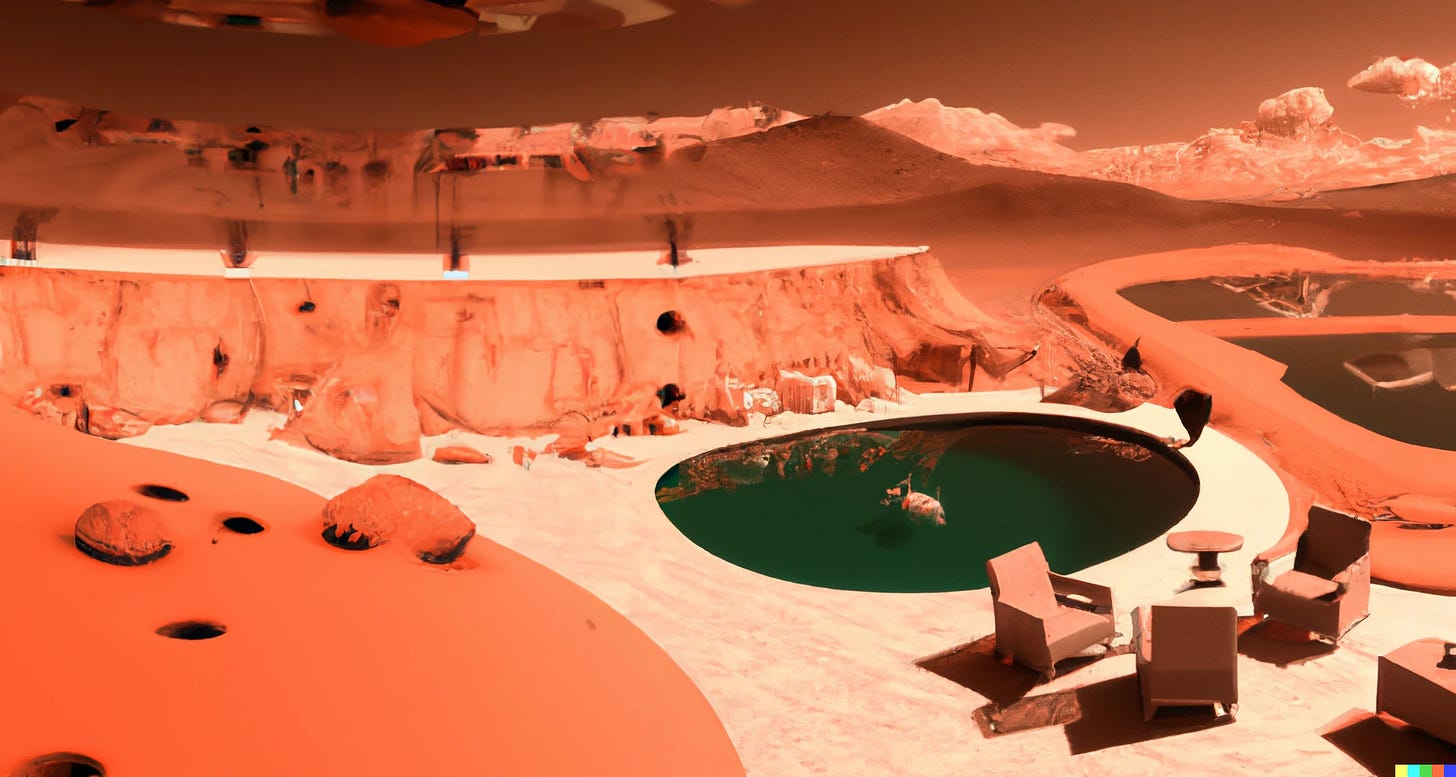
Four. Editing existing images
DALL·E 2’s crowning feature is the ability to manipulate images in response to a textual prompt, with consideration given to elements like lighting, texture, shadows, and so on. There’s a seating area by the pool that I’d like to have removed. I erased the chairs using DALL·E 2’s in-built eraser tool, then moved on to the next input field and entered the required data.
Sunlit swimming pool with translucent water in Mars, photograph
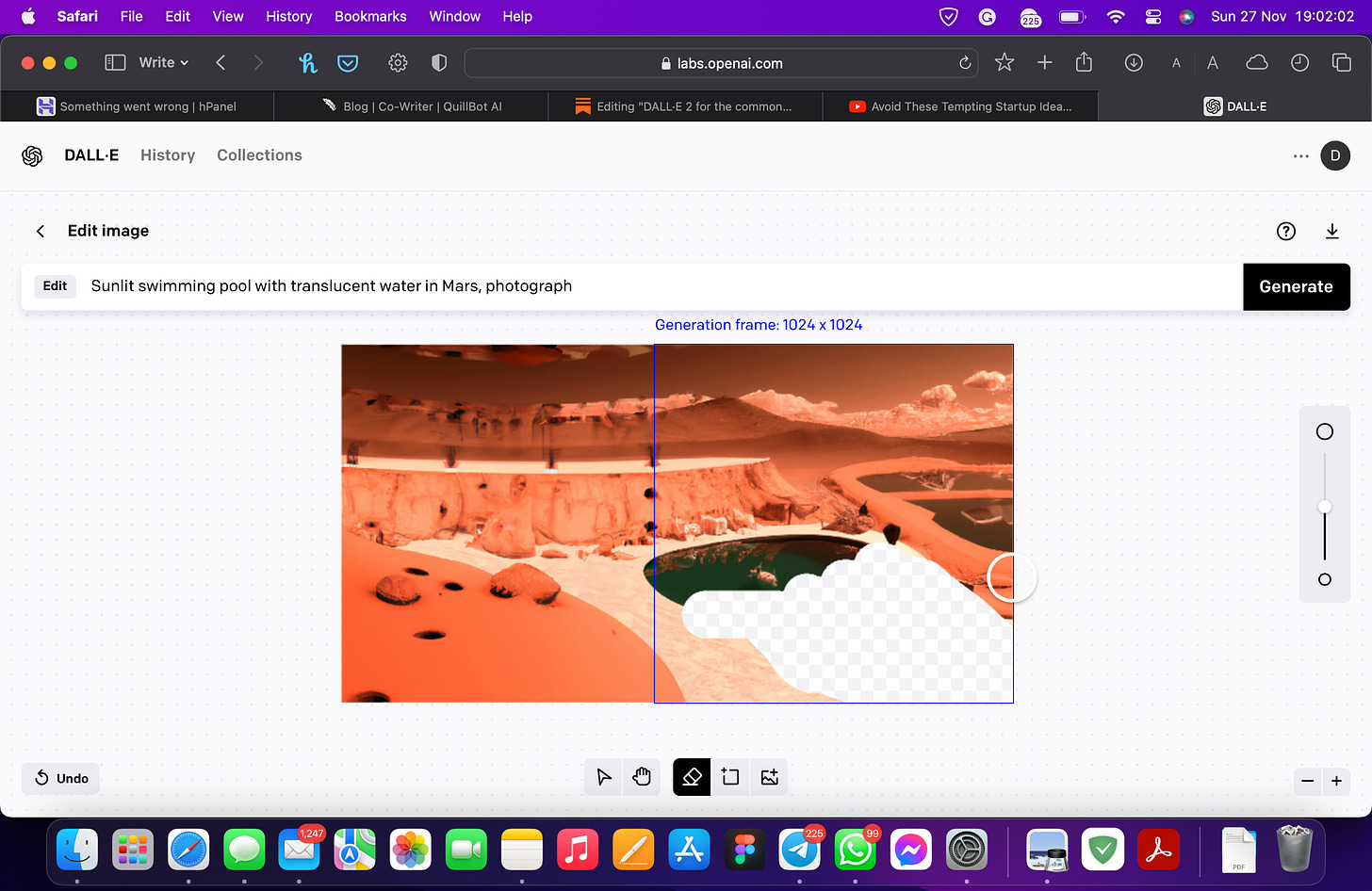
Et voila. Here’s the result.
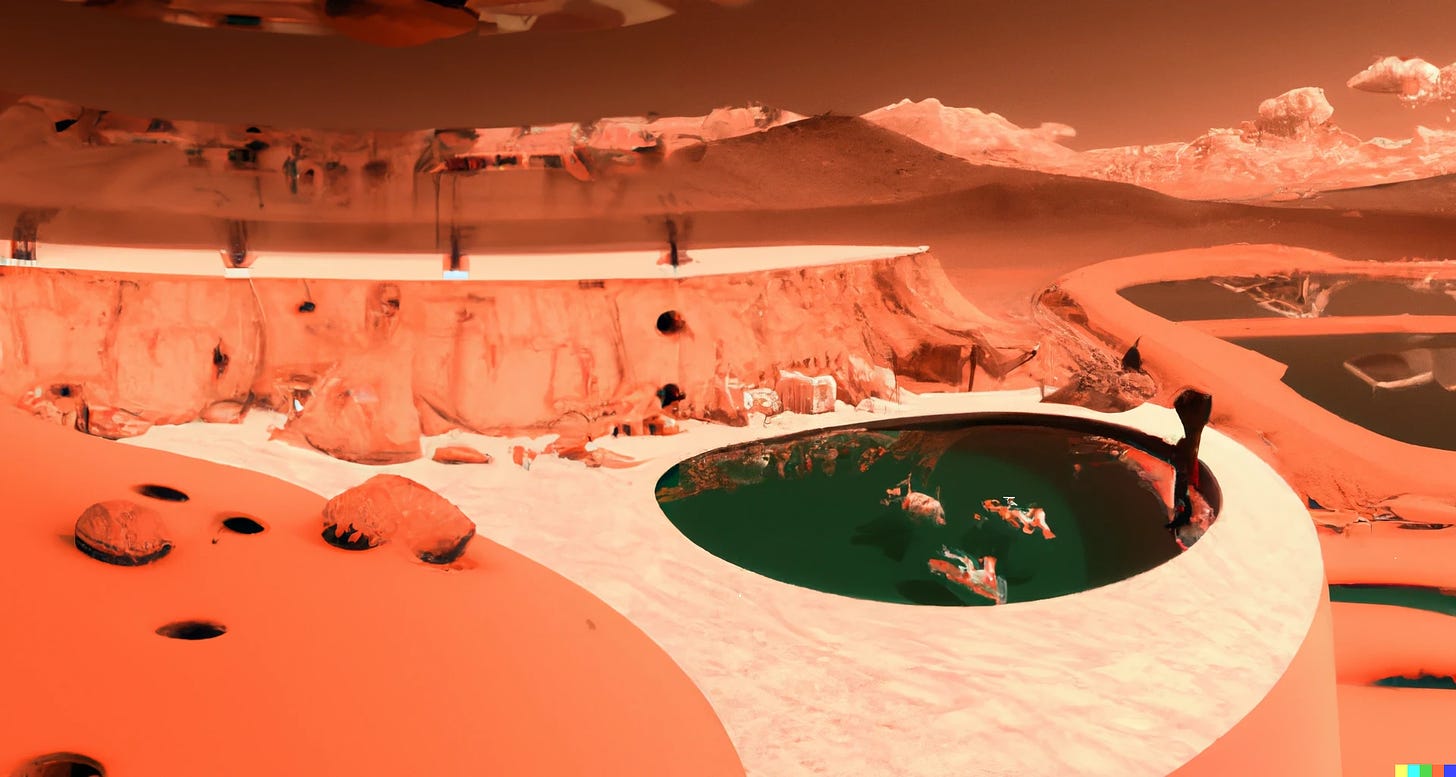
How to use DALL·E 2?
On the Open AI website, you will find a signup form for DALL·E 2 that you can fill out and submit to get started as soon as you have an account. The user after which enters a descriptive prompt that can be up to 400 characters long, such as “an astronaut riding a horse in an impressionist style,” and AI magic creates the image. When you first log in to DALL·E 2, you will immediately receive a welcome bonus of fifty free credits. You will lose one credit for each individual image that you generate. In the event that you run out of credits, you will always be able to purchase additional ones directly from the website. Even when purchased in large quantities, a single credit will still set you back approximately $7.5, according to my calculations. That comes to approximately $612.64. Holy crap, that’s a steep price.
Here’s what you can do to make the most of those credits:
- Give a detailed description of the image you want to create. Image generators that are run by AI are driven by text prompts. You have to tell DALL·E 2 what to do. It can only do so much on its own.
- Give context. The background is key to a great image. Focusing only on the subject leaves the background blank or generic. DALL·E 2 tends to leave the background white if not specified.
- Using art styles in prompts can yield great results. This includes art styles, artists, and paintings.
- Be clear about more than just the subject and background. It is also important to provide a description of the overall vibe that you are going for.

